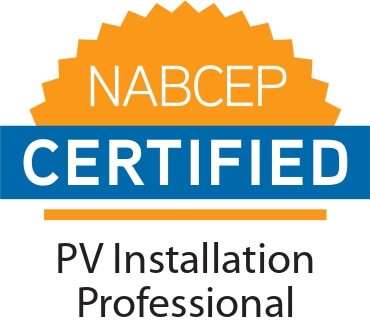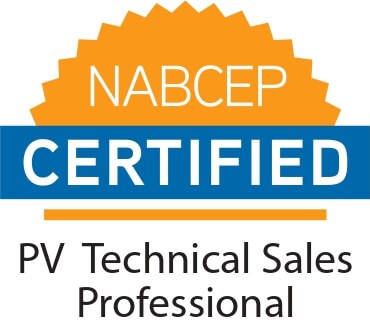Grid-Tied Solar Installations reduce your electric bills while increasing your payback
Rooftop Solar Installations

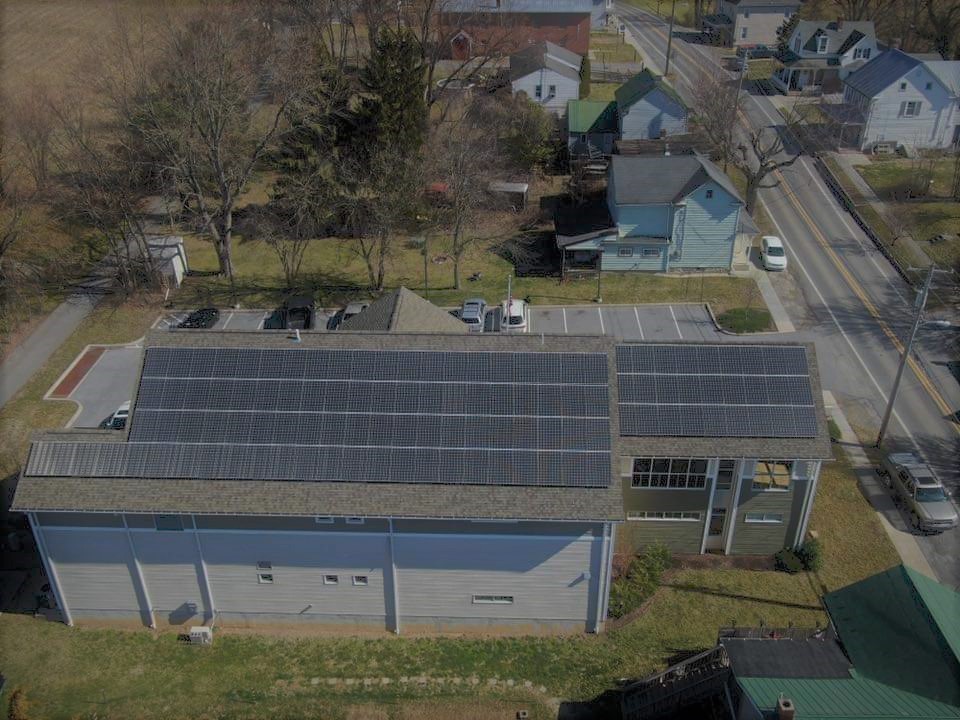

The Hedgesville, WV, Public Library’s rooftop solar installation supplies 100% of its annual electricity needs.
Because it’s connected to the power grid, you get electricity at night or on days when the sun’s not shining. With sunlight, it powers your home’s lights and appliances and your business’ machinery – and lets you make money by selling the power you generate and use back to the electric utility.
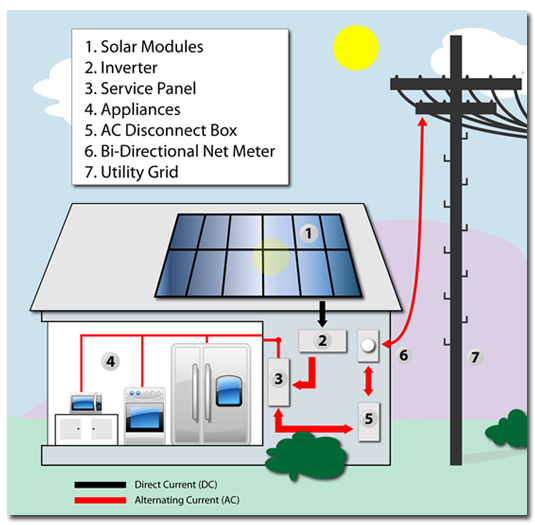

Roof-mounted solar systems are the simple in design and easy to install.
While many roofs are right for solar installations, not all are. That’s why we use satellite photography to check your roof’s orientation and shading. And why we conduct a free on-site solar evaluation to make sure your roof’s big enough to accommodate enough solar panels for your power needs and structurally strong enough to support them.
If not, we can custom-engineer and build a ground-mounted or parking canopy installation to meet your specific needs. (Many other solar installers can’t.)
Ground-Mount Solar Installations



If your roof isn’t right for solar, we can custom-engineer and build a ground-mount installation.
As its name implies, a ground-mount solar installation is built on open ground. So it can be pointed in the direction that captures the most solar energy.
Ground-mount solar installations are completely scalable. Their size is limited only by your electrical needs and the availability of open land. That makes them particularly good for agricultural use; just one farm can easily consume more electricity than five houses. They’re also good for commercial properties, where HVAC and other machinery may already be taking up rooftop space.
Parking Canopy Solar Installations
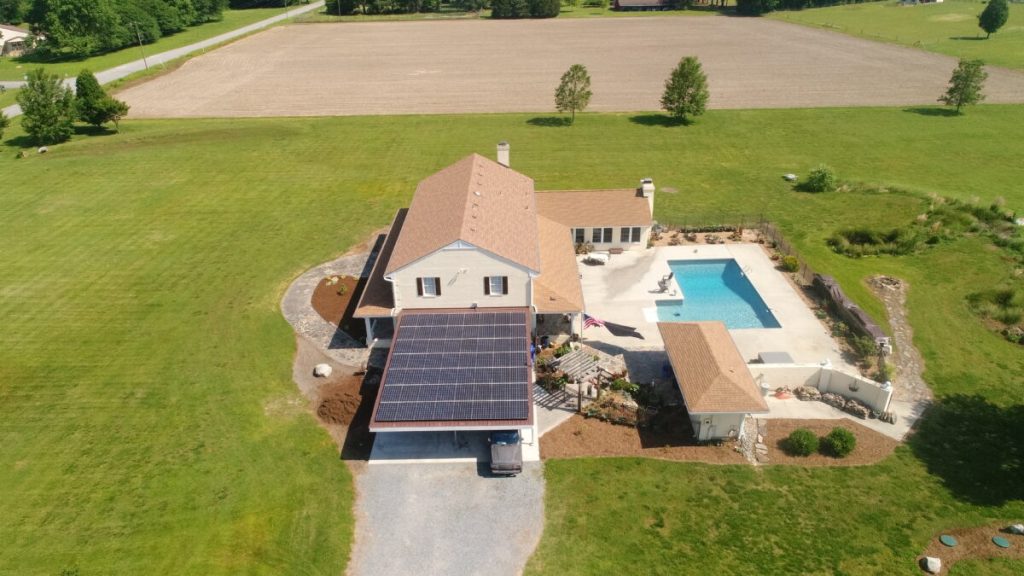


Parking canopy solar installations combine the advantages of a roof-mounted installation, a ground-mounted installation, and a carport.
Parking canopy solar installations combine the advantages of rooftop installations, ground-mount installations, and carports.
Like ground-mount solar systems, parking canopy solar installation can be pointed towards the most sunlight and clear of shading. Being higher than ground level, they can absorb a bit more sunlight. And like carports, they can provide space for parking one or more cars.
They’re also good for business use. A commercial parking canopy solar installation can turn a business’ parking lot into a profit center in two ways: by cutting the company’s electrical bills in half, and by generating income from selling back excess electricity to the electric utility.
Battery Backup Solar Installations



Blackout protection without fossil fuel hazards
If you’re considering backup power for your home, then a solar system that’s both grid-tied and with battery backup (bimodal) may be your best option.
Over the past five years or so, we’ve installed more battery backup solar systems than anyone else in West Virginia, and, based on feedback from distributors and manufacturers, we believe we’ve installed more solar with battery backup systems than anyone within 200 miles of our office – including parts of Pennsylvania, Maryland and Virginia in addition to West Virginia. It’s our specialty and our passion, and we consider a grid-tied solar system with battery backup to be the ultimate solar system – much better than a home with a large fossil-fuel generator with its risks of fire and carbon monoxide poisoning.
On a day-to-day basis, solar with battery backup produces power you use in the house, selling back excess to the power company like any other grid-tied system. But when the power goes out, it instantly switches over to the stored energy in the batteries, so you continue living a normal life with water from the well, key lighting circuits, refrigerator and freezer, and other critical loads.
Solar with battery backup is much more complicated than the typical grid-tied system. It requires some careful planning, design, and, most important, customer participation in determining the right size and configuration for your property. We’ll guide you through that process. It’s what we do.
Industry experts say solar with battery backup (storage) will be the big growth segment over the next few years. If this appeals to you, we invite you to speak with some of our dozens of satisfied customers and let us design and install a battery backup (bimodal) system for you
Off Grid Solar Installations
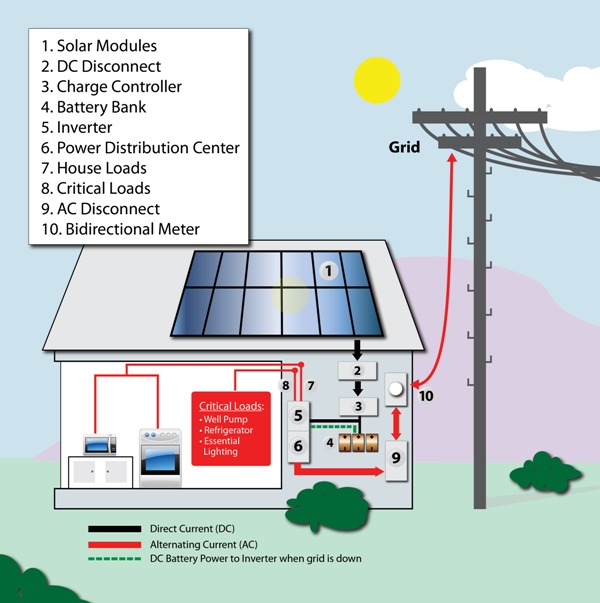

Off-grid solar is enjoying a resurgence in the region, as more people discover that it’s far less expensive to install a stand-alone solar system than to pay the power company incredible construction costs to extend the grid to certain properties.
An off-grid system is ideal for a small vacation cottage or hunting cabin, but it can also be an everyday solution for energy-conscious customers who want the independence of living off the grid and greatly reducing their carbon footprint (and are willing to be frugal with their power use).
A properly executed off-grid system is an exercise in planning and design, and we’ll be happy to work with you to design and install a system tailored to your specific needs and expectations.
Agricultural Solar Installations
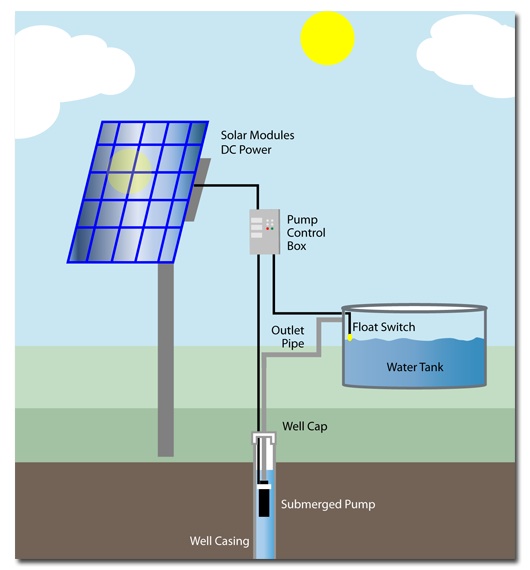





Farms have huge electrical needs, consuming more power than five average-size homes. Needs like pumping wells and cattle tanks, irrigating crops, and ventilating outlying buildings.
Farms also have hundreds of acres of land, most too far away from the nearest power line to affordably connect to.
But off-grid solar installations can accomplish what the power companies can’t. On a farm in Washington County, MD, for example, there was plenty of room for us to design, engineer, and build a 186-solar module ground-mount installation producing more than 85,000 kilowatt-hours a year.
As a ground-mount solar installation, we were able to orient it for maximum exposure to sunlight. And because it’s connected directly to the pumps, fans, and other machinery it powers– with no charge controller or batteries – it works with maximum efficiency and reliability.
Agricultural Direct Solar Installations can easily be scaled up or down in size. So they can work stand-alone, right next to the pumps or fans they power in remote areas – without the need or high cost of running power lines.
And in addition to the usual solar savings and tax credits, if more than half of your gross revenue comes from farming, we can help you qualify for $2,500 to $500,000 in subsidies from the USDA’s REAP program.
Rooftop Solar Installations

Ground-Mount Solar Installations



If your roof isn’t right for solar, we can custom-engineer and build a ground-mount installation.
Parking Canopy Solar Installations



Parking canopy solar installations combine the advantages of rooftop installations, ground-mount installations, and carports.
Like ground-mount solar systems, parking canopy solar installation can be pointed towards the most sunlight and clear of shading. Being higher than ground level, they can absorb a bit more sunlight. And like carports, they can provide space for parking one or more cars.
They’re also good for business use. A commercial parking canopy solar installation can turn a business’ parking lot into a profit center in two ways: by cutting the company’s electrical bills in half, and by generating income from selling back excess electricity to the electric utility.
Battery Backup Solar Installations



Blackout protection without fossil fuel hazards
Off Grid Solar Installations


Go off-grid without leaving your neighborhood. Installing a stand-alone solar system can be far less costly than paying the power company incredible construction costs to extend the grid to certain properties. Add battery backup, and you can have carbon-free power 24/7.
Agricultural Solar Installations







